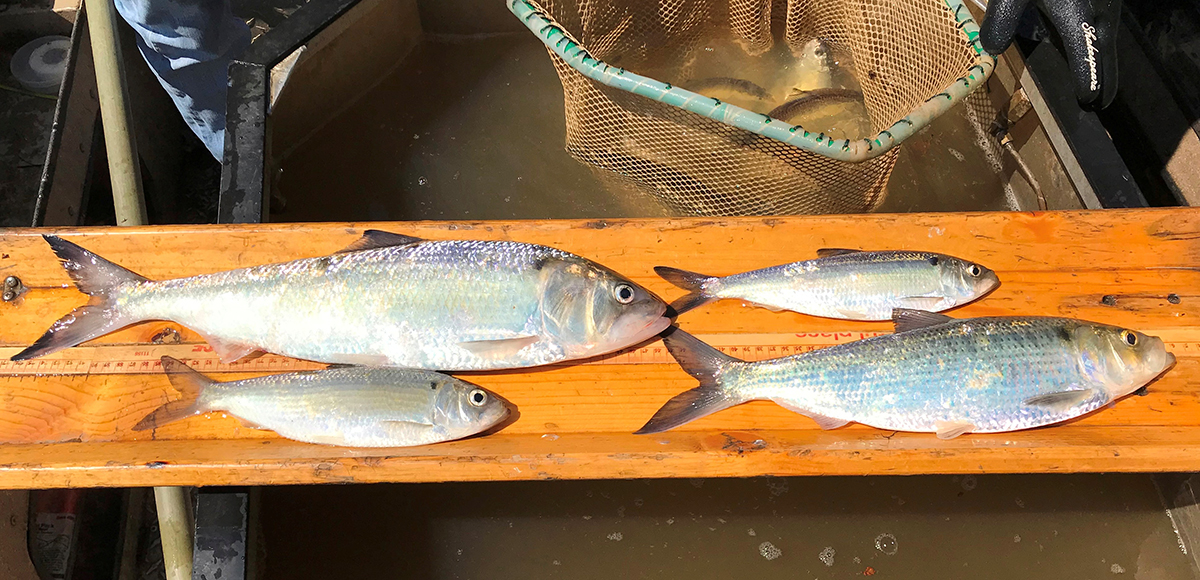
Photo by Catherine Lim/DWR
By Alex McCrickard/DWR
Anglers fishing for shad in Virginia will most often catch hickory shad, Alosa mediocris. These fish are prized for their fighting ability and acrobatic tendencies once hooked. Anglers will occasionally catch the less abundant, American shad, Alosa sapidissima. When hooked, American shad provide a great fight, often staying down deeper in the water column, not coming to the surface easily. American shad are a species of greatest conservation need and there is currently a statewide moratorium. As anglers, it’s essential that we play our part in the conservation of these species. Proper identification of the shad you have caught is paramount.
To tell the difference between an American shad and a hickory shad, anglers should look at the mouth of the fish. The American shad has a terminal mouth where the lower jaw fits evenly under the upper jaw when the mouth is closed. The hickory shad has a superior mouth where the lower jaw protrudes substantially beyond the upper jaw when the mouth is closed. American shad tend to be larger and more symmetrical (top to bottom) than hickory shad.

Photo by Catherine Lim/DWR
There is currently a statewide moratorium on American shad and all American shad must be released as possession is unlawful. Our sister agency, the Virginia Marine Resources Commission (VMRC) sets regulations on both hickory shad and American shad across the state. There are currently no regulations on hickory shad caught above and below the fall line in all coastal rivers of the Chesapeake Bay. There is no length limit but a bag limit of 10 fish per day for hickory shad caught in the Meherrin River below Emporia Dam, Nottoway River, Blackwater River (Chowan Drainage), North Landing and Northwest rivers, and their tributaries, plus Back Bay.
Anglers should also note that there is a statewide moratorium on both alewife and blueback herring. This regulation has been effective since 2012, when the VMRC established the moratorium to comply with the management directives from the Atlantic States Marine Fisheries Commission (ASMFC). Anglers targeting shad will sometimes catch alewife and blueback herring, and these species must be released as possession is unlawful.

Alewife (top) vs. blueback herring (bottom). Alewife are somewhat olive colored (back/upper body). Alewife have a larger eye than blueback herring, with the alewife eye diameter being greater than the distance from the front of eye to the top of snout. The diameter of a blueback herring’s eye is smaller than the distance from the front of the eye to the top of the snout. Photo by Alan Weaver/DWR

All four Alosines from the tidal Rappahannock River. American shad (top left), blueback herring (top right), alewife (bottom left), hickory shad (bottom right). Photo by Alan Weaver/DWR


